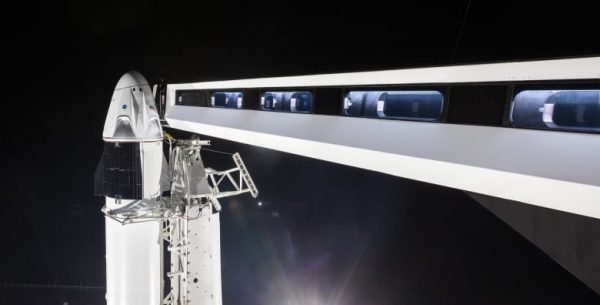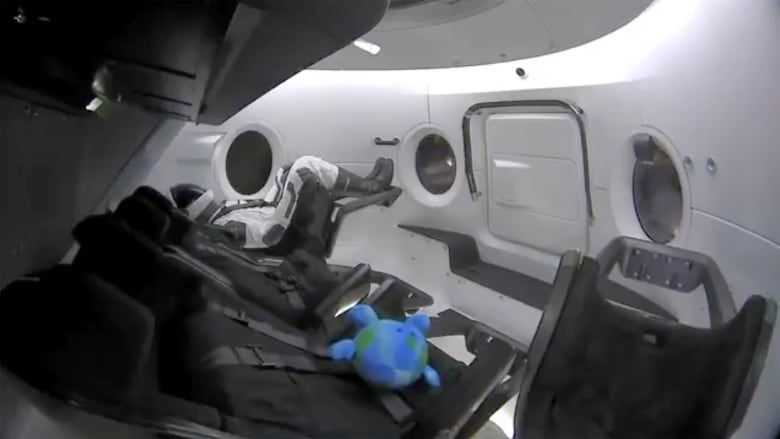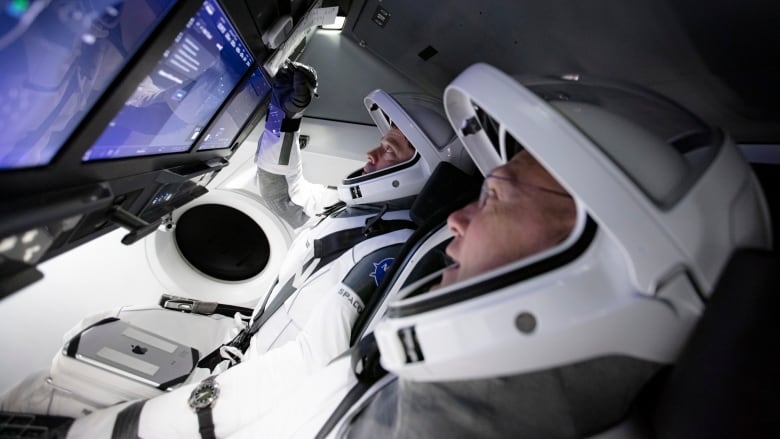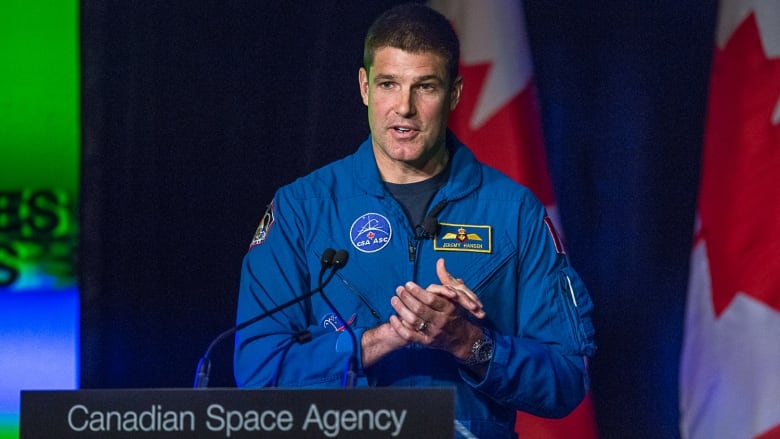‘A new era in human spaceflight’: SpaceX to launch first test flight with humans in 39 years – CBC.ca
NASA astronauts Bob Behnken and Doug Hurley are ready to make history as they prepare to become the first two Americans to launch from U.S. soil since 2011.
Behnken and Hurley are scheduled to launch from the Kennedy Space Center at 4:32 p.m. ET on May 27 atop a SpaceX Falcon 9 rocket in a Crew Dragon capsule in the Demo-2 mission.
“This is a new generation, a new era in human space flight,” NASA administrator Jim Bridenstine said in a teleconference Friday morning.
“When you think about Mercury, Gemini, Apollo and then space shuttle, those are really the four times in history when we have put humans on brand-new spacecraft,” he said.
“And now we’re doing it for the fifth time. And that’s just the United States. If you look globally, this will be the ninth time in history when we put humans on a brand-new spacecraft.”

First ocean landing since Apollo
Demo-2 is the first test with humans since the 1981 launch of the space shuttle Columbia. It will also mark the first time astronauts have landed in the ocean since the Apollo missions.
The May 27 launch follows the first test, Demo-1, a mission that sent an uncrewed Crew Dragon to dock with the International Space Station (ISS) in March 2019, while Canadian astronaut David Saint-Jacques was aboard.
Following the Demo-2 launch, the first stage of the Falcon 9 rocket will return to Earth at the floating platform in the Atlantic Ocean off the coast of Florida. The astronauts will then spend two or three months with the three men currently on the ISS, American astronaut Chris Cassidy and Russian cosmonauts Anatoli Ivanishin and Ivan Vagner.
The pair will be launching in a brand-new vehicle and wearing brand-new SpaceX spacesuits designed specifically for the Crew Dragon and up-to-date tech such as touch screens, something that the astronauts said took some getting used to.
U.S. and Canada used Russian rockets
On July 8, 2011, the space shuttle era came to a close as Endeavour soared into the sky for the final time.
With nothing to replace it, Americans — and Canadians — were left to launch atop the Russian space agency’s (Roscosmos) Soyuz rockets. The cost for a seat? Roughly $80 million US.
But in 2014, NASA awarded contracts to two commercial companies, SpaceX and Boeing, to make the next generation spacecraft that would take astronauts to the ISS.

SpaceX was the first to complete all its testing, though it did have a few delays and setbacks, including the loss of the original Crew Dragon in April 2019 in an explosion.
Boeing’s CST-100 Starliner has also suffered setbacks. The last one was in December 2019, when its uncrewed test failed to reach the ISS. An investigation following the incident found that the spacecraft actually risked destruction twice.
Boeing’s next test flight will occur sometime later this year.
If the Demo-2 test flight is successful, the official start of SpaceX astronaut launches from the U.S. to the ISS will be Crew-1. No specific date has been set.
Seasoned astronauts
Both Behnken and Hurley are seasoned astronauts. Behnken flew on two shuttle flights, STS-123 in March 2008 and STS-130 in February 2011. He also performed three spacewalks during each mission.
Hurley also flew on two shuttle flights, STS‐127 in July 2009 and the final mission, STS‐135 in 2011.

“I certainly didn’t expect to fly again,” Hurley said on Friday.
Gwynne Shotwell, SpaceX’s president and chief operating officer, said that she’s anxious to get the astronauts launched and safely home.
“My heart is sitting right here,” she said with her hand at her throat. “And I think it’s going to stay there until we get Bob and Doug safely back from the International Space Station.”
Next Canadian astronaut watching closely
Jeremy Hansen, the next Canadian astronaut to head into space, will fly on either the SpaceX Crew Dragon or Boeing Starliner no later than 2024. He, too, will be watching the launch closely.
“I’ll be excited … a little bit nervous for my colleagues, of course, but I do have a lot of faith in it,” Hansen said of the new spacecraft. “We know what we’re doing. There are risks that are being managed, but we’re returning something that we’ve been working on for a long time, so it’s going to be rewarding to see it come to fruition.”

Shotwell said this endeavour wasn’t only about building a spacecraft, but also all of SpaceX’s employees getting to know the crew on a personal level.
“I wanted to make sure that everyone at SpaceX understood and knew Bob and Doug as astronauts, as test pilots — badass — but dads and husbands. I wanted to bring some humanity to this deeply technical effort as well.”
Launching during a pandemic
The launch will be historic for another reason: unlike most launches, NASA and SpaceX are insisting that people not head down to Cape Canaveral to watch the historic event.
“The challenge that we’re up against now is that we want to keep everybody safe,” Bridenstine said.
Hurley said the current situation is disappointing, but that encouraging people to stay home is the right thing to do.
“We just want everybody to be safe and enjoy this and relish this moment in U.S. space history,” he said.
The astronauts themselves have been taking extra precautions themselves during training, Shotwell said. Only essential personnel have been around the pair, and masks and gloves have been used by those who do come in contact with them.
“It’s not only about Bob and Doug’s safety but also the safety of the crew on board the International Space Station,” said Kathy Lueders, program manager of the commercial crew program at NASA.
“It is a shame that more people are not going to be able to enjoy it in Florida. However, it is the right thing to do. Watch it from home; watch it online; watch it on TV,” Shotwell said.
“Be there for the ride with us. We’ll be together in spirit more so than in physical space.”






